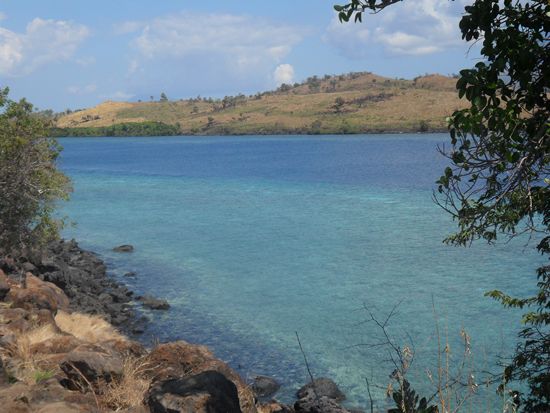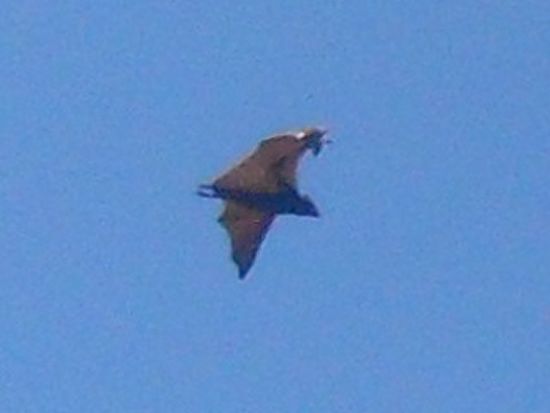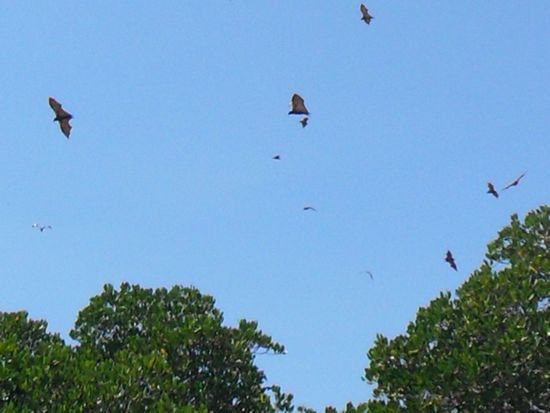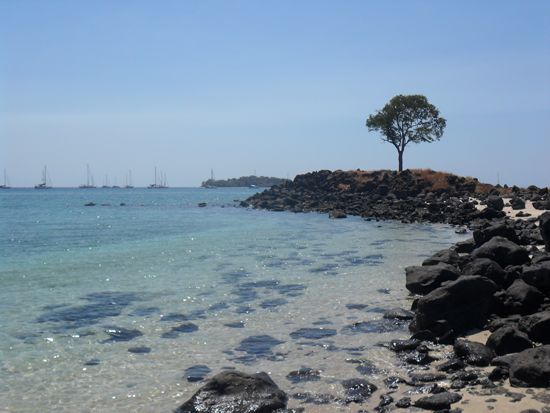Bats and Islands S 8 15 E 123 20

|
Another happy few days were spent at the anchorage north east of Adonara Island where we returned after our hectic time at Lembata. The approach channel for the anchorage is through a passage with reefs on either side, fortunately we still had the track from our previous visit logged on the GPS. Another rally boat was less lucky and managed to end up on a reef while trying to find the channel when the sunlight was too low. It is very important to have the sun high and behind for these reef anchorages. This makes the reefs very easy to see but as soon as the sun drops the light reflects off the sea and even with polaroid specs the reefs are invisible. More happily some cruisers managed to pull the yacht off with little damage except to the confidence of 2 chastened yachties. We visited one of the islands here that is a bat camp (the correct name for a colony of bats that live in the open apparently). These fruit bats live in their tens of thousands on one island and at sunset stream over to the mainland. The sky comes alive as they swirl upwards and outwards over their terrain. Sometimes they swarm during earlier parts of the day and are easier to see, we took the dinghy over to their island on such an occasion and could see them against the sun, the skeleton of their wings clearly picked out and the stretched skin gleaming like black mirrors in the sunrays.
The alternative name of flying fox is apt. They are large with a wing span of about 2 feet, they look very primitive and have a deep musky smell which once savoured is not easily forgotten. We saw them for sale as meat in a Vanuatu market and got a close up whiff which stuck firmly in the memory.
As the sky thickened with bat wings we worried about flying guano and beat a retreat to have an afternoon without bats on a pleasant beach where we found wonderful shells round the remains of camp fires where the local fishermen cook their shellfish.
 Just what the doctor ordered for
cooling off and getting rid of bat scents. |



